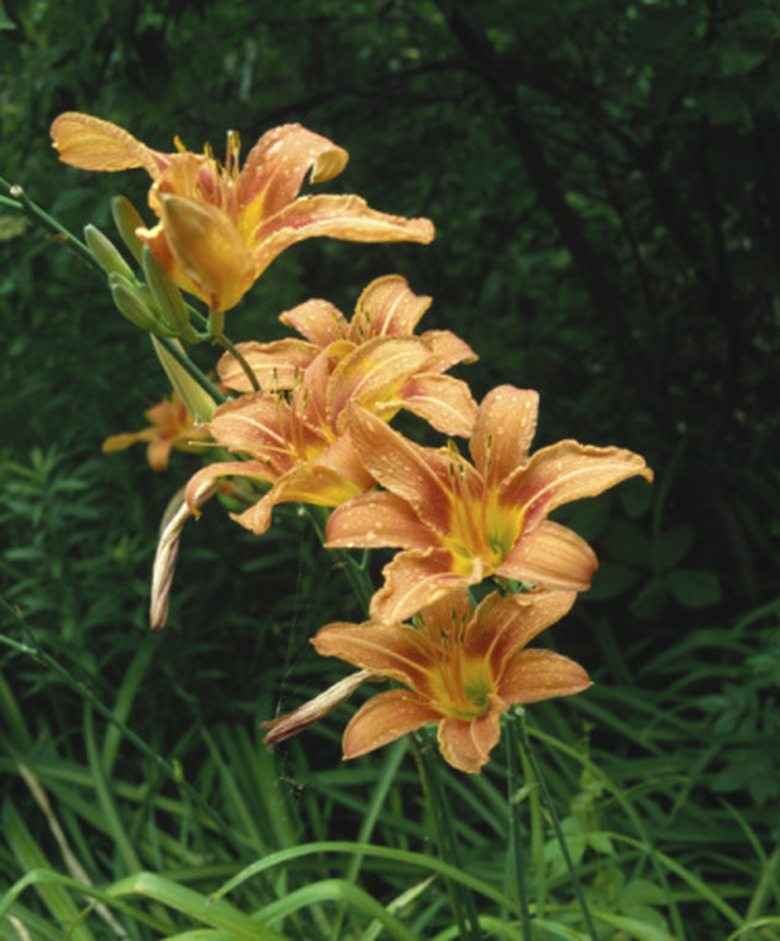How To Get Rid Of Tiger Lilies
The lilies you're trying to get rid of aren't tiger lilies, but a flower known as ditch lily, tawny daylily or common orange daylily. Its botanical name is Hemericallis fulva and it is everywhere. This "lily" isn't a true lily at all, but is called one because its flowers resemble those of true lilies.
Identification
There are two very simple ways to distinguish ditch lilies from genuine tiger lilies. The first is by the leaves and the second is by the flower. True lilies have small, pointed leaves running up and down their stem, but ditch lilies have long, spear-shaped leaves that sprout from the base of the plant and no leaves on their stems. True tiger lilies have spots on their petals and ditch lilies do not. As anyone who's planted lilies knows, true lilies are grown from bulbs, but ditch lilies have a root system known as rhizomes. This same root system allows them to spread unrestricted, unlike true lilies, which are clump-forming and must be divided if you want to spread them around.
- The lilies you're trying to get rid of aren't tiger lilies, but a flower known as ditch lily, tawny daylily or common orange daylily.
- As anyone who's planted lilies knows, true lilies are grown from bulbs, but ditch lilies have a root system known as rhizomes.
Invasiveness
Because this flower has no way to check its own growth, it has become very common in areas beyond the backyard. According to the Ohio Perennial and Biennial Weed Guide, this flower is common along roadsides and other disturbed areas, such as old meadows. According to the USDA Plants Database, only Wisconsin currently officially lists the ditch lily as an invasive species, but it is present in most of the 50 states and is extremely difficult to eradicate.
Control
The ditch lily is so difficult to control because its root system can become so extensive. It is necessary to remove all root parts to prevent the flowers from resprouting, and it isn't likely that this will be accomplished in one go; it may require a few tries and methods. Start by hand digging the roots. Do this when the soil is wet so they're slightly easier to remove. Once you've removed all you can by hand, take a rototiller to the area and turn over the soil repeatedly to dig up additional root sections. To fully eradicate the roots, you're probably going to need an herbicide. Glyphosate is a nonselective herbicide — the active ingredient in popular, name-brand herbicides — that can be applied to the soil to kill the remaining roots. If any new plants appear the following season, repeat this process.
- Because this flower has no way to check its own growth, it has become very common in areas beyond the backyard.
Alternatives
The American Hemerocallis Society recommends any clump-forming true lily to replace ditch lilies. Of course, the appeal of the ditch lily is that it will grow just about anywhere with very little care. If low-maintenance is what you're looking for, try Asiatic lilies.
